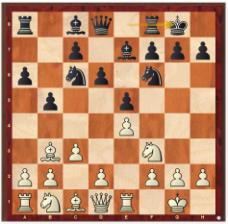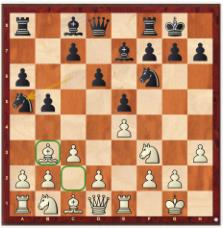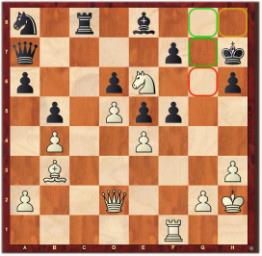ChessBase 15: Replay Training - part 2
The first part of the tutorial about the new "Replay Training" function in ChessBase 15 explainded how to use this function. The second part explains how to optimize your training and how to save the results of your replay sessions. Try it, have fun, get better! | Drawing: ChessBase
Practice makes perfect
The first part of the tutorial about the new "Replay Training" function in ChessBase 15 explained how to use this function. The second part explains how to optimize your training and how to save the results of your replay sessions.
Getting ready
It is helpful to create a separate database with the games you want to use for your training. But of course you can also use existing databases, e.g. the database with classical attacking games played between 1834 and 2018 that comes with ChessBase 15.
![]()
Settings
Before you start to take a minute to decide how much time and energy you want to invest. Do you want to find the moves for one side or for both side? Do you want to get hints or not? And if yes, verbal hints or hints with the radar board? But don't worry too much – all settings can be changed during training!
White or Black and hints — Yes or No

Below the game data (who played against whom, when and where…) are four buttons that allow you to decide whether you want to propose moves for White or for Black or for both sides. By default, the program assumes that you want to propose moves for the winning side or for White when the game ended in a draw. You can also decide whether you want hints or not.
The button "Repertoire" leads to a feature which we will explain in a separate tutorial.
Replay training — toolbox
| On the right are five more buttons. | |
| By clicking on the safety belt icon you get (additional) hints (if such hints are provided). |
| Clicking on the icon with the cogwheels switches to analysis mode. You can move pieces on the board and Assisted Analysis offers help. |
| Clicking on the pliers icon activates calculation training. Supported by Assisted Analysis you can analyse the game. However, the moves do not appear on the board - you can only see the starting position. Just like in a real game. |
| This activates the radar board. It shows positions that will occur in a game. A more detailed explanation follows below. |
| Clicking on the disk icon inserts your proposals and analyses into the notation. Thus, you can save your ideas and thoughts for later analysis. |
Hints
If "Hints" is activated you get a verbal hint at every move which helps you to find a move. However, the hint always refers to the move the engine would play – which is not always the move played in the game.
| In this position the hint is: Make a pawn move on the kingside Sometimes the hints sound trivial and here it is now easy to find 9.h3 but trying to translate such hints into moves helps to focus and sharpens the eye for chess. |
| If you are inactive for some time, more than 30 seconds, the program might offer more hints. Two green circles appear: one for the piece that should move, one for the square to which the piece should go. |
Hints how to use hints:
- If you are in the mood for some easy and entertaining training you might want to activate the hints.
- If you want to have some time to think about the game, you might want to deactivate the hints and consider to use the safety belt icon if need be!
The radar board
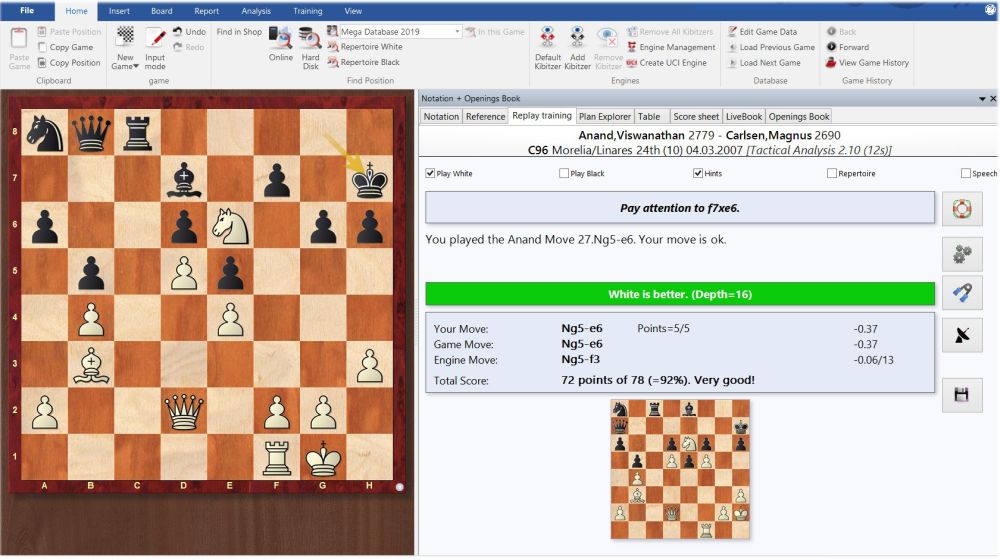
The radar board appears in the lower right corner of the replay menu and shows a position that later occurred in the game (usually three or four moves after the current position). This gives you an idea of how the game developed. You can activate the radar board by default but you can also activate or deactivate the radar board for individual positions by clicking on the radar board.
Hints on how to use the radar board:
- During the opening phase, it is recommended to activate the radar board.
- For lighthearted training, you might want to activate the radar board.
- If you want to think deeper and more intensively about the game only activate the radar board when you need or want to!
Analysis and calculation training
During replay training, you can always go back to a certain position to find and/or analyse alternatives.
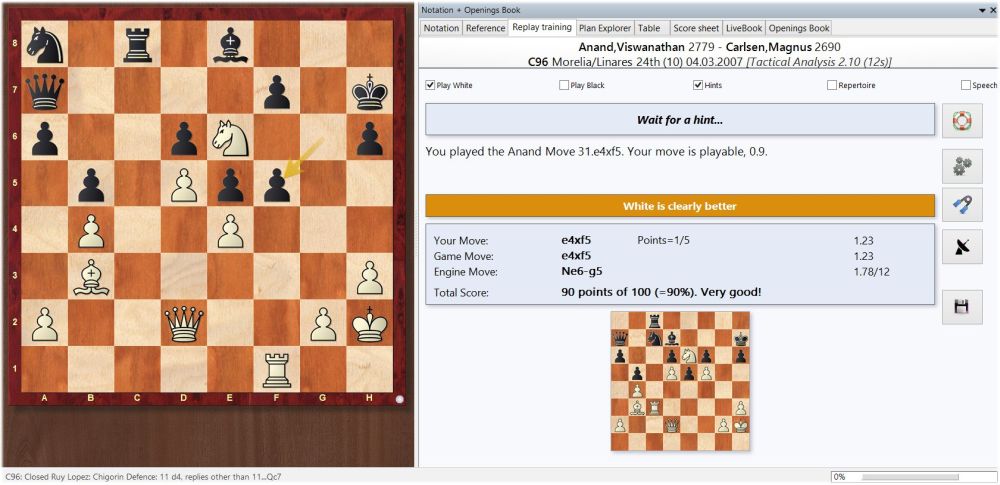
In our sample game, we wanted to play 31.exf5 — an idea that cost us 4 points — but we see that the engine prefers 31.Ng5+. Now, we can analyse this move or — more challenging — use it for some calculation training.
Analysis
Clicking on the icon with the cogwheels activates the analysis function. We can now make moves on the board. The program helps us with "Assisted Analysis". To end the analysis, click the cogwheels icon again.
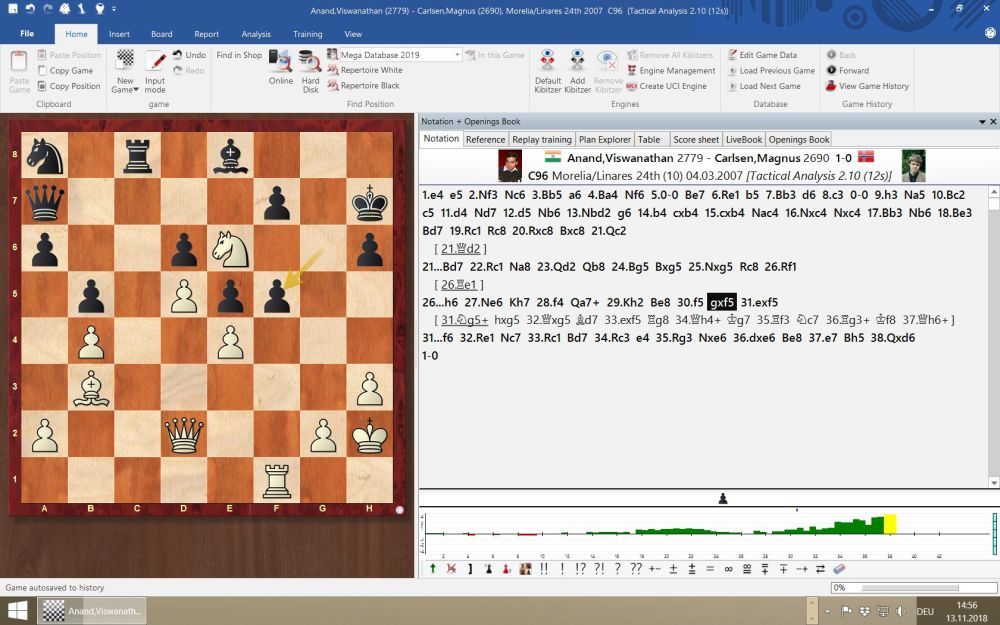
The variations you entered appear in the notation and will be saved when you save the game.

Calculation training
Clicking on the icon with the pliers activates the calculation training.
You can now enter moves and variations. However, the moves are not executed on the board — you have to keep the variations in your mind, as in a real game. The program only helps with "Assisted Analysis".
| The "Assisted Analysis" indicates that after 31.Ng5+ (the move does not appear on the board!) |
Clicking the icon with the pliers again ends the calculation training. If you click the disk icon at the end of the training session to save the result the variations are shown.
Saving the replay training
You can save your training session, e.g. if you later want to review it.
Saving analyses and calculation training
To insert the results of your calculations into the notation you have to finish your analyses and your calculation by clicking on the icon with the cogwheels or the icon with the pliers.
Saving analyses and proposals
Clicking the disk symbol saves the analyses and the moves you proposed. If the proposed moves are different from the moves played the proposals are shown as variations.
Saving previous analyses
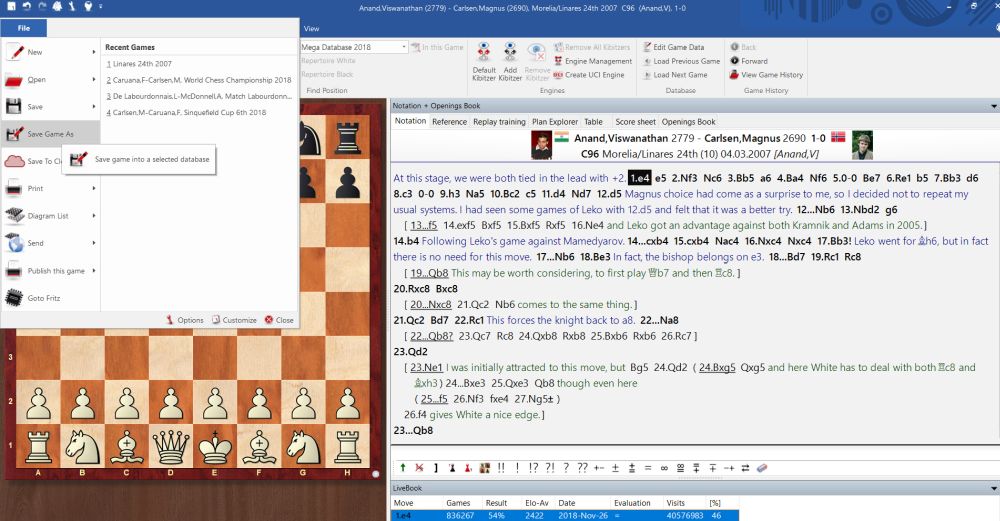
After clicking the disk icon the game notation appears. Previous analyses were overwritten. If you want to save them do the following.
Save the result of the replay training with "File→Save Game As" and select the database in which you want to save the file.
After saving press "Ctrl+Z" (= Undo) and the game reappears in its original form with previous comments on the screen.
Instructive video by ChessBase's chief programmer, Matthias Wüllenweber
About the Author:

Martin Fischer is a ChessBase staffer who, among other things, organizes and holds seminars throughout Europe and helps administer playchess.com. For ChessBase, he publishes a quarterly tactics booklet "Chess Problem — the enigmatic pages of Fritz". He lives in Hamburg and plays for the Chess Club Johanneum Eppendorf.
How to get ChessBase 15 from ChessBase India?
Introducing hard copies!
Since the inception of ChessBase India we have been selling products in soft copies/ downloadable format. Once you place an order with us we would send you the setup file and serial key. While all of this will continue, with ChessBase 15 we have introduced the concept of hard copies. For an additional Rs.500, you will get the product in hard copy and delivered to your doorstep anywhere in India.
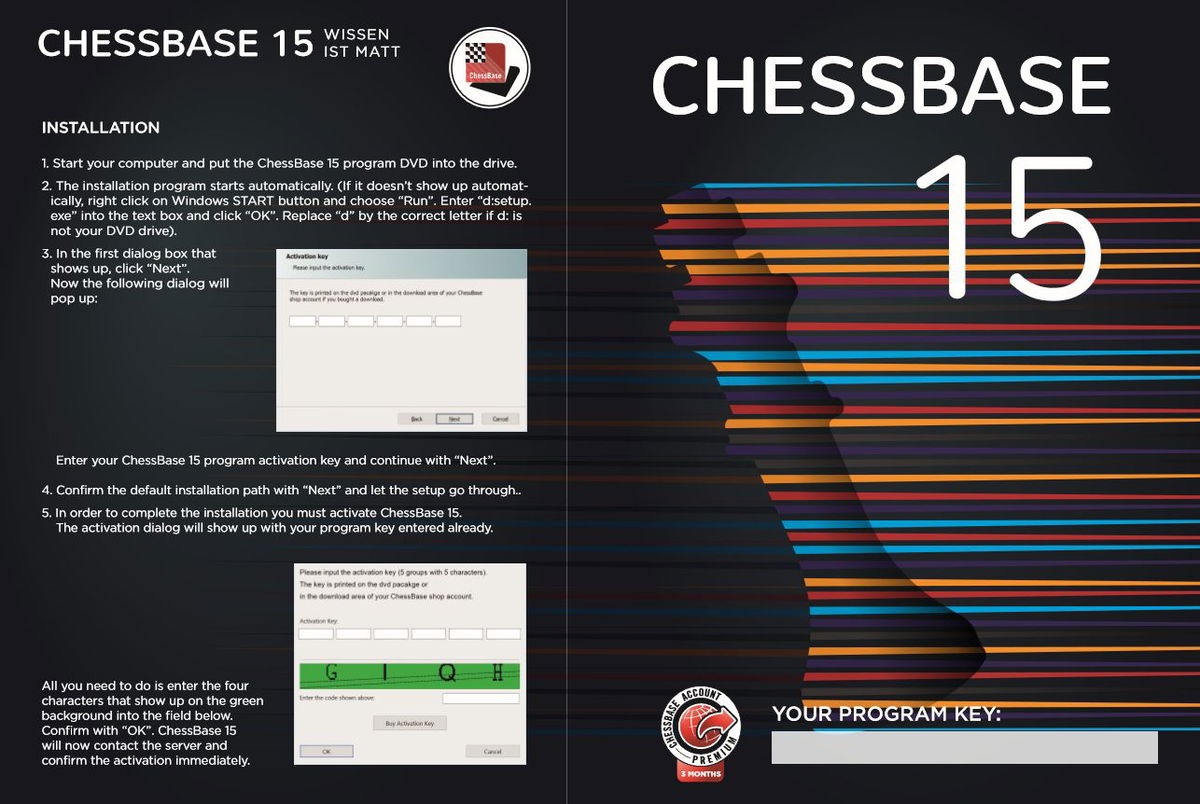
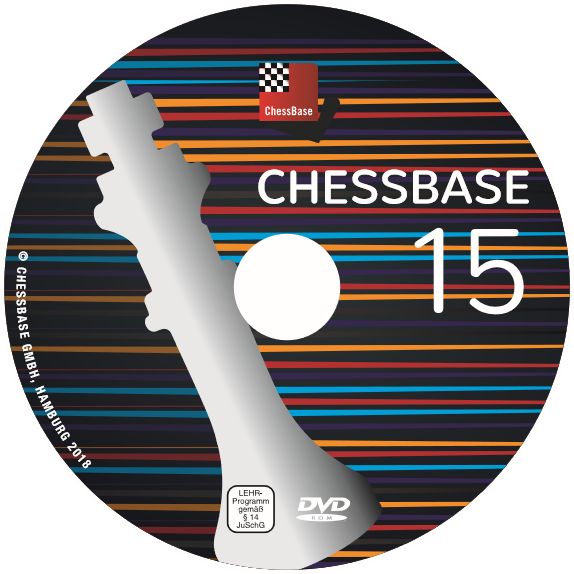
Let's say you would like to buy ChessBase 15. Once you go to the ChessBase India shop, you will have an option where ChessBase 15 is available, whether you want to buy it in downloadable format via email or you would like to buy it in hard format and get it delivered to your home address.
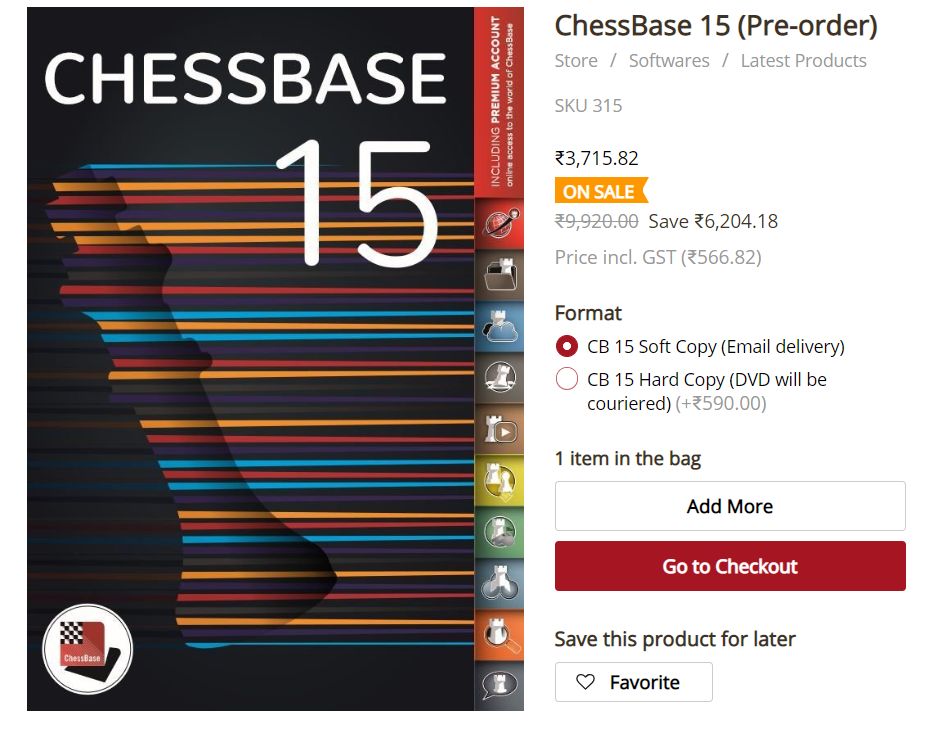
Different ways to get ChessBase 15:
If you have bought ChessBase 14 from us, you can buy ChessBase 15 for a discounted price from us. This would mean you have to email the serial key of ChessBase 14 to us.
If you are buying ChessBase for the first time from our store then the cost is Rs.3149 + GST.
We would recommend you that you should go for ChessBase 15 + the biggest and the best database in the world of chess - the Mega Database 2019, which not only has 7.6 million games, but also 72,000+ annotated games by some of the best players in the world including Magnus Carlsen, Vishy Anand, Garry Kasparov and many others.
For all our trusted users who had bought the ChessBase 14 + Mega Database 2018 combo from our shop, you can now buy the ChessBase 15 + Mega Database 2019 upgrade at a very huge discounted price:
To buy the above you must mail us your CB14 + Mega Database 2018 key to chessbaseindia@gmail.com
You can of course get the Mega Database 2019 on its own. But if you did buy Mega Database 2018 from ChessBase India, then you get the new version for as little as 2/5 the cost!
By mailing us the serial key of Mega Database 2018 to chessbaseindia@gmail.com you can now get the Mega Database 2019 at 2/5 the cost:
This year we have also introduced the Big Database 2019, which has all the games of Mega Database 2019 but not the annotated ones. You can check out the Big Database from here.
Launching the all new - ChessBase 15 mega Pack!
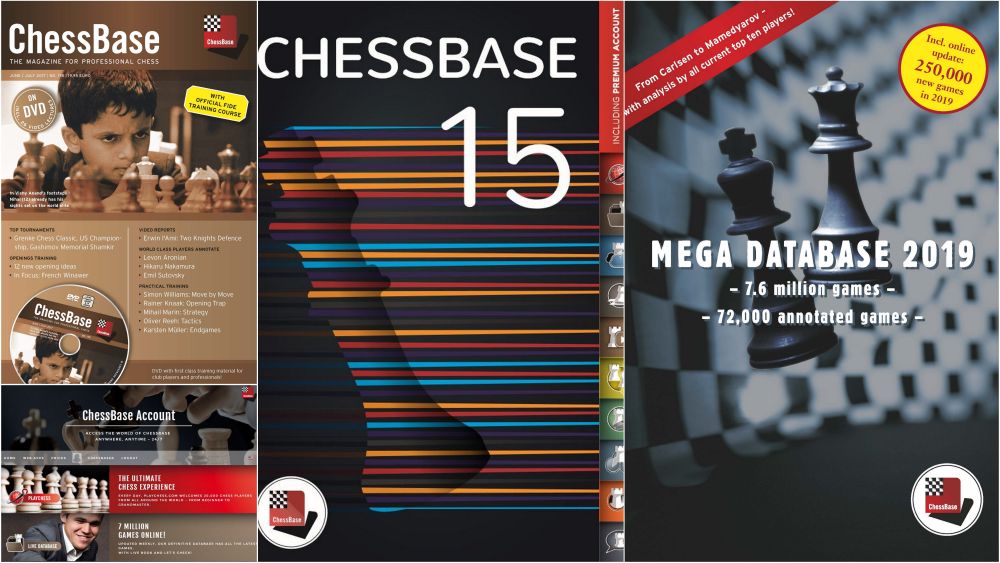
The mega pack has everything that a serious player needs for preparation. The ChessBase 15 Mega Pack includes:
1. ChessBase 15
2. Mega Database 2019
3. ChessBase Premium Account
4. ChessBase Magazine (6 issues)
The total cost of all the four would come to Rs.3149 + Rs.4999 + Rs.1499 + Rs.4194 = Rs.13841 +GST
However the ChessBase 15 Mega Pack helps you to save huge amount of money (Rs.4842 to be precise!) as it costs you just Rs. 8999 + GST. It is an offer not worth missing!
Browse the ChessBase India shop
ChessBase India shop main page
Latest releases in ChessBase softwares





